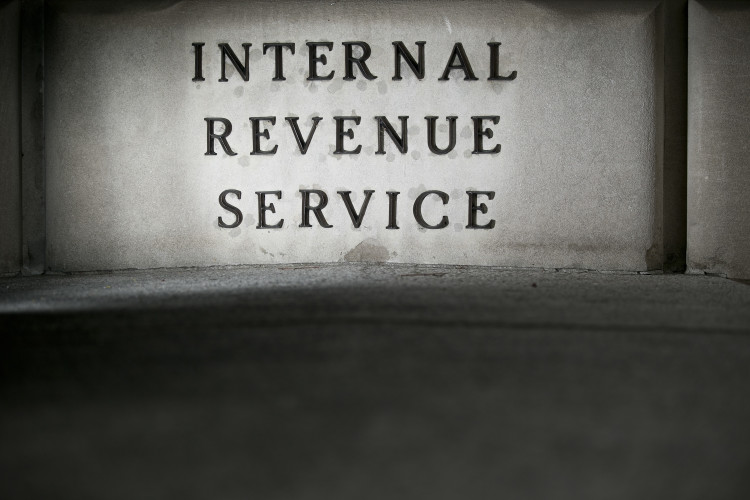Here’s the Trump Tax Loophole Your Accountant Can Blow Open

published Feb 5, 2018 2:44:19 PM, by Ben Steverman and Patrick Clark
(Bloomberg) —
If exploiting a tax loophole is as much an art as a science, then the tax planning profession is poised for a creative renaissance.
The inspiration is the tax law signed by President Donald Trump in December. The patrons are affluent Americans who can afford advice from the nation’s more ingenious accountants, tax lawyers and financial advisers.
And the new medium they’re experimenting with? A 20 percent deduction for so-called pass-through businesses, whose income is taxed on firm-owners’ personal returns.
It’s early days, and the Internal Revenue Service has yet to issue guidance on how to interpret the hastily passed law. That hasn’t stopped tax pros from circulating proposals and riffing on each other’s ideas, as the industry seeks to coalesce around strategies that will save their clients money while standing up to scrutiny by the IRS and judges. Some pass-through owners may be instructed to group together their diverse businesses to minimize their tax bills, while others may be told to split pieces off.
“I’m sure folks will try to push the edge of the envelope,” said Mark Nash, a tax partner at PricewaterhouseCoopers LLP. “They always do.”
Trump and Congressional Republicans have said middle-class Americans and small businesses will be the biggest beneficiaries under the $1.5 trillion tax cut. But the strategies under consideration to take advantage of the 20 percent pass-through deduction show how top earners could ultimately reap the biggest gains.
‘Principal Asset’
All taxpayers who earn less than $157,500, or $315,000 for a married couple, can now deduct 20 percent of the income they receive via pass-through businesses from their overall taxable income. If taxpayers earn above those amounts and aren’t service professionals, they must meet tests to take the full deduction — the size of their deduction depends on how much they pay in employee wages or how much they’ve invested in capital like real estate.
For “service professionals,” the break fully phases out if they earn more than $207,500 if they’re single, or $415,000 if they’re married.
There’s ambiguity with the rules, though. For example: What’s a service business? The tax code already specifies an official list that includes health, law, accounting, actuarial science, performing arts, consulting, athletics, financial services and brokerage services. But that language is “broad and vague and the IRS has never provided guidance as to what those terms mean,” Nash said.
Plus, that section of the new legislation ends with a puzzling coda. Also excluded are “any trade or business” where the “principal asset” is the “reputation or skill” of its employees or owners. Few are really sure what this means.
“If I put 10 professionals in a room, I’m going to have 10 different ideas of what’s going to be excluded,” said Edward Reitmeyer, a tax partner at accounting firm Marcum LLP.
That kind of confusion creates opportunities to work around the service definitions or to re-cast businesses in ways that arguably fall outside the excluded categories.
Office Real Estate
One strategy being discussed is to combine diverse businesses into a single entity. Let’s say you’re an accountant who also invests in real estate, managing hotels and other properties. Depending on how the IRS writes the regulations, it might make sense to put everything in one company, according to Richard Kollauf, director of business advisory at BMO Private Bank.
Instead of appearing to the IRS to be an accountant — a service-based profession that wouldn’t qualify for the pass-through break over the income limit — you look more like a real estate magnate, who would qualify because of large capital investments.
Or, if your business makes the majority of its money through your service profession, the opposite strategy could work. By breaking different businesses apart, service business owners could have at least some of their income qualify for the pass-through deduction. A medical practice might do a fair amount of debt collection or other back-office support. Those divisions could be spun off into a separate “management company,” which could qualify for the break.
Taking it a step further — service professionals may also consider buying new real estate and adding it to their business portfolios. That’s an option under consideration by Nicholas Sher, a certified public accountant, with offices in midtown Manhattan. Sher said he’s thinking about buying an office condo through a new entity — which would then lease it back to his firm, Sher & Associates. He could then try to take the 20 percent deduction through the condo entity.
“If I had the right location I would do it in a second,” Sher said.
Business owners who do that may be tempted to drive a hard bargain with themselves — to maximize the money that qualifies for the deduction. But keep in mind: The IRS has rules about transactions with yourself, and you may have to use market prices.
Employee Leasing
“Tax lawyers are very good at dreaming up these things,” said Indiana University Bloomington Professor Bradley Heim, an economist who studies tax policy.
A service business could also spin off an employee-leasing entity, to get around the professional service restrictions, according to Kenneth Brier, a partner at tax-planning firm Brier & Ganz based outside Boston. Employee-leasing entities tend to charge mark-up prices as a way to make a profit.
For instance, instead of paying its attorneys $200,000 a year, a law firm could pay its leasing spinoff a marked-up price of $250,000 per employee — shifting profits from the law firm to the leasing entity. While the lawyers in the new spin-off unit would be doing legal work just like before, Brier said he believes their new employer could qualify for the deduction as an employee-leasing company.
IRS Resources
At least theoretically. Not all these strategies will work. IRS regulations could shut down some loopholes, forcing tax planners to improvise new, riskier tactics to get around the rules. The most aggressive techniques might require a legal fight with the IRS. (But don’t worry: Creative tax strategies won’t send you to prison unless you’re actually lying to the IRS.)
The agency might have trouble keeping up. Adjusting for inflation, the Taxpayer Advocate Service estimates the IRS budget has been cut by 20 percent since 2010.
The estimated cost of the pass-through deduction is $415 billion over the coming decade, according to the nonpartisan Joint Committee on Taxation. The tax break could be even more expensive if IRS regulations can’t keep gamesmanship to a minimum.
“You have to be careful. There are people out there who come up with hare-brained ideas,” said Eric Hananel, a CPA and principal at UHY Advisors. “Tax considerations are important but you can’t let a tax consideration drive a business decision.”
Not all tax planning strategies are controversial. A married doctor making $500,000 might drop her taxable income below the threshold by maximizing contributions to retirement plans and a health savings account (HSA), and strategically giving money to charities, perhaps through a donor-advised fund.
Some law firms and other pass-through entities may wind up converting to so-called C corporations, which now enjoy tax rates of 21 percent, instead of 35 percent. (There’s a potential drawback: Corporate profits get taxed a second time when they’re received by individuals, usually as dividends.)
Expect lots of creativity from America’s tax experts this year. After all, most of them have a strong incentive to bend the rules. As well-paid service professionals, they’re personally excluded from the new law’s biggest benefits. “That’s an issue near and dear to every lawyer and accountant’s heart,” said Jack Wilk, managing partner of the law firm Wilk Auslander.
To contact the reporters on this story: Ben Steverman in New York at bsteverman@bloomberg.net ;Patrick Clark in New York at pclark55@bloomberg.net To contact the editors responsible for this story: Margaret Collins at mcollins45@bloomberg.net Alexis Leondis
copyright
© 2018 Bloomberg L.P







No Comment